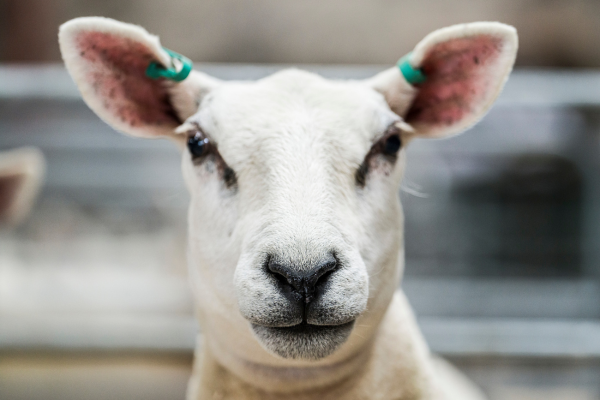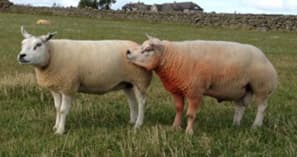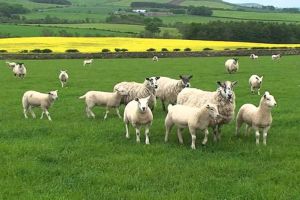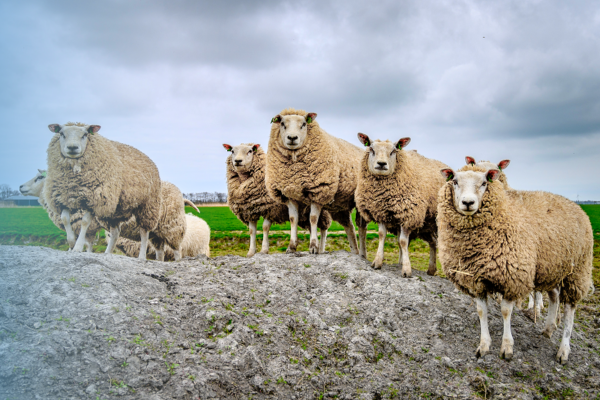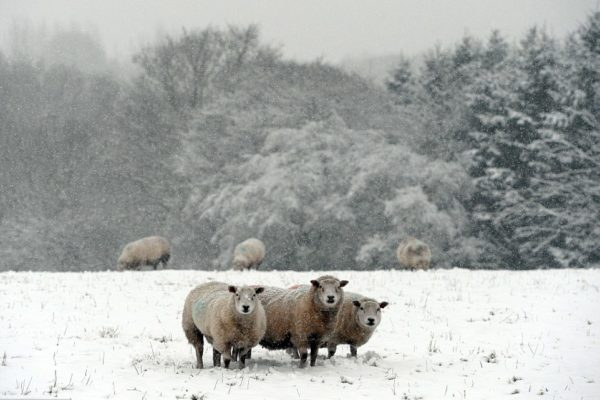Business and Policy September 2025 – Sector Focus: The Cost of Infertile Gimmers
29 August 2025It is fairly common for gimmers (ewes lambing for the first time at two years old) to have a lower pregnancy rate than mature ewes in their first-year lambing. After all, they are still growing themselves as well as developing offspring and also the products of conception (i.e. placenta, udder development, and colostrum). However, we also often find flocks with a high number of barren gimmers (ranging from 2-10% typically).
The costs of taking a ewe lamb to tupping as a gimmer are not insignificant, with nutrition and health both having a large impact on the success of conception. Whether she will turn a profit in her first year in the breeding flock will very much depend on lambs carried and the success of rearing thereafter. While a ewe that doesn’t mate successfully does have a cull value, we must also consider the replacement cost to maintain flock numbers.
Cost associated with gimmering
| Costs | £/Gimmer | ||
|---|---|---|---|
| Ewe Lamb | £200.00 | ||
| Vet & Med | £7.00 | ||
| Forage | £37.80 | ||
| Feed | £7.20 | ||
| Grazing | £35.00 | ||
| Tup | £4.40 | ||
| Total Cost | £291.40 | ||
| Profit Potential | In Lamb (Single) | In Lamb (Twin) | Empty |
|---|---|---|---|
| Cull Ewe | £150.00 | ||
| Lamb Value | £161.00 | £323.00 | - |
| Total = | £161.00 | £323.00 | £150.00 |
| Profit/Loss | -£130.40 | £31.60 | -£141.40 |
The costs associated with growing a ewe lamb, putting her to a tup and through to scanning are shown in the table below against her potential outputs. To do this, several assumptions have been made:
- All costs are from ewe lamb purchase in late August / early September (home bred lambs would also have an opportunity cost at this stage).
- Vet and med costs include pre tupping abortion vaccine (less Toxo), Clostridial vaccination, faecal counts and trace elements.
- Diet assumptions assume the majority of time is spent at grazing with some allocation for preserved forage and a little supplementation over two winters.
- The tup cost is based on a ram costing £800, tupping 60 ewes per year and kept for 3 years.
- The lamb value is based on the average cost/kg at present (734 ppkg deadweight).
As we can see, during the first year while the gimmer is yet to produce, costs are high and potential for profit is low unless in a lamb with multiples. Therefore, we are very much reliant on ewe longevity and continued production for profits in the long run.
Empty ewes, on average, were coming in at a loss of £141.40 (excluding replacement costs). If we assume an average replacement rate of 20% in a 1,000-ewe flock, with a moderate 5% barren rate in gimmers, that presents a potential loss of £1,414 in the first year at the point of scanning from empty gimmers alone.
Preventing infertility
The key to getting sheep in lamb largely relies on correct nutrition for growth and maintaining body condition and the overall health of the sheep, including managing worm burden and keeping vaccination protocols up to date.
As fertility of sheep is heavily associated with liveweight and condition, the table below gives some useful production targets in relation to a sheep’s age and stage of development.
| Age of sheep in months | Target percentage of mature weight |
|---|---|
| 7 | 60% |
| 12 | 75% |
| 19 | 80% |
| 24 | 90% |
It is vital to know the average liveweight of mature ewes to monitor growth progress – this may also be indicated by the weight of mature cull ewes.
Another suggestion to promote the fertility of gimmers is to consider running them as ewe lambs with a raddled vasectomised teaser tup to monitor which lambs are coming into heat correctly and promote oestrus. This may also help with gimmer selection prior to tupping, and by identifying problems early, helps to reduce costs. Please remember to monitor the harness on the ram to ensure comfort and prevent sores.
With the costs of replacements not decreasing, it really is worth taking a little bit of time to ensure they are productive and can continue to perform in the flock for years thereafter.
Lorna Shaw, lorna.shaw@sac.co.uk
Sign up to the FAS newsletter
Receive updates on news, events and publications from Scotland’s Farm Advisory Service


